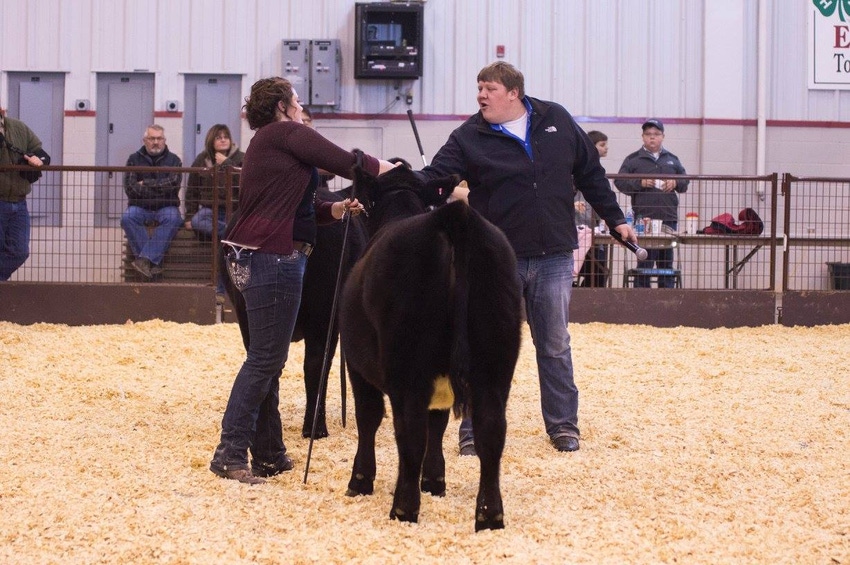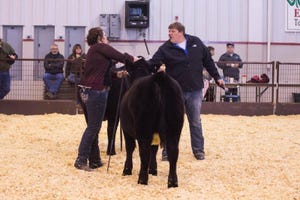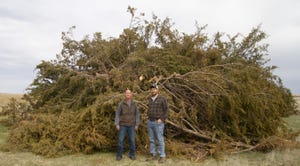5 packer concerns about show steers & how 4-H families can help
June 15, 2016

Summer is here, kids are out of school, and if they participate in 4-H, FFA or junior breed association activities, chances are they’ve been busy this month washing, leading and working on their show calves in preparation for upcoming shows.
I love the life lessons that kids learn from showing cattle; however, with the intense competition also comes those parents and kids who might be willing to step over the line of integrity in order to win.
This is not only wrong, but it’s unacceptable when it comes time to slaughter these market beef animals. At the end of the day, we are teaching kids to raise a safe, nutritious beef product, and that should always be at the forefront of parents’ mind and be kept at a higher priority than winning and losing.

Photo Credit: Riley Zoss
Of course, sometimes mistakes can be made, too, so it’s not always an ulterior motive that creates problems with show animals. It’s important for everyone — from the novice beginner showman to the experienced, highly-motivated veteran — to be aware of packer issues and work to negate them.
Heidi Carroll, South Dakota State University Extension livestock stewardship associate, recently shared information presented in a webinar by Paula Alexander, Tyson project manager for sustainable food production and food safety quality assurance, about the specific challenges packers face when handling show animals at the plant.
Alexander said show animals pose five general packer challenges including:
1. Residue sampling increases
“Product may be held if positive for further testing and additional tracking in plant, which could result in the loss of product if it tests positive,” says Carroll.
2. Scheduling of employees
Carroll writes, “USDA/FSIS requests that all show animals are harvested first in the day or ‘A Shift’ because of increased sampling needs.”
3. Carcass data collection
Alexander explained in her webinar that show animals require more people to do tag transfer and carcass data collection, which may slow down the line.
4. Mobility of the animals
I doubt this refers to show steers that just complete a state fair and headed to the packing plant, but perhaps Alexander is referring to the club calves that are born crippled or the ones that didn’t make the cut because of their structure and mobility.
Like all beef animals, not just show animals, “They must be able to walk to the restrainer/knock box on their own or they will be condemned,” says Carroll.
5. Bruises or injection site lesions
Any time an animal requires a shot, it can leave an injection site if Beef Quality Assurance (BQA) protocols aren’t followed.
These injection site lesions require, “trimming off the damaged muscle, which means the plant loses money and increases employee’s trimming time on carcasses,” says Carroll.
Carroll explains, “Alexander outlined the United States National Residue Program of the chemicals that are tested and the process each plant is required to go through to ensure all meat is safe. Packing plants have plans to minimize the risk of presence in the meat of chemical hazards, such as drug and medication residues.
“As part of this plan, packers typically require affidavits and/or treatment records for cattle and hogs they buy from state youth projects or market animal shows. Packers typically require these documents be provided prior to arrival or with the incoming truck of animals. Several examples of these documents and the required phrases were provided in her presentation slides for viewers to see.”
So what can the parents and 4-H members do to responsibly show cattle and ensure a high-quality beef product? The answer is pretty much common sense, but it’s worth reiterating.
Carroll writes that 4-H families should, “Guarantee industry best practices through BQA programs where both parents and youth complete the training. Adhere to drug label withdrawal times carefully. Communicate with the buyer or plant if withdrawal time on any animals is missed. Understand we are all responsible for producing safe food. Be proactive and assist youth to implement best management practices that result in safe food products.”
Alexander also said in the webinar, “When Tyson receives animals from a fair and there is an issue with an animal from that group, it taints the view for that fair, not just that one individual. So everybody needs to work together and understand what’s happening in that organization and not just their animals.”
Read more of Carroll’s summation of the webinar here.
Also, check out the University of Nebraska-Lincoln’s Animal Care Resources for additional information on how 4-H youth can learn to responsibly manage their beef animals.
The opinions of Amanda Radke are not necessarily those of beefmagazine.com or Penton Agriculture.
You might also like:
How to control sucking & biting lice on cattle
When is the best time to wean? It might be younger than you think
Late-gestation trace mineral supplementation shows promise
7 tips for limiting the spread of invasive species in your pastures
You May Also Like
.png?width=300&auto=webp&quality=80&disable=upscale)


